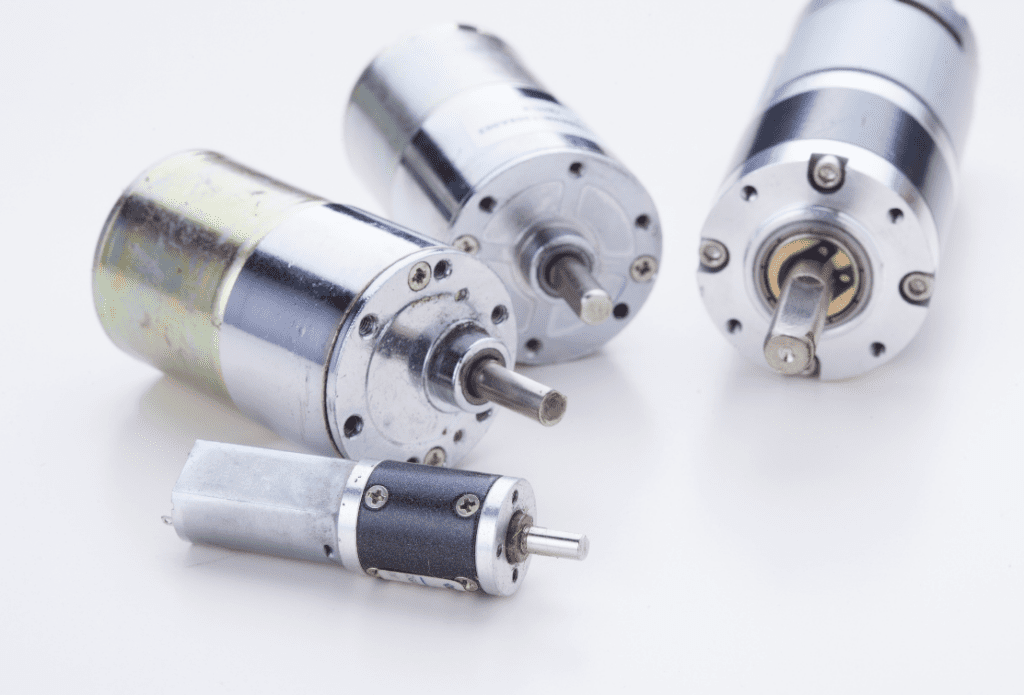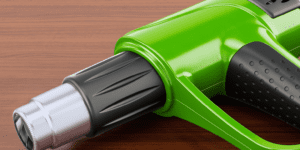Spis treści:
DC ( direct current) motors are current-powered machines that convert electrical energy into mechanical energy (rotational motion).
What is a DC motor?
DC motors are a group of machines that are powered by direct current at different voltages. They convert electrical energy from a power source into mechanical energy in the form of constant rotary motion of a shaft. Engines of this type can be divided into different categories. One of them is the division into geared and non-geared models. Geared DC motors are further divided according to the type of built-in gearbox. The most popular are DC motors with right-angle gears, right-angle gears and machines with double gears.
DC micro motors, on the other hand, are divided into Low Power, Medium Power and High Power. In addition, they can be divided by power voltage level, power consumption, torque, possible gear ratios and maximum number of revolutions per minute of operation. DC motors equipped with an encoder are also noteworthy. Such machines are ideal for implementation in complex projects that require precise control.
How are DC motors built?
One of the most important components of DC motors are the permanent magnets from which the stator is made. The next important components are the windings, which are connected to a set of sheets made of copper. The plates form the rotors of DC motors. To the moving elements in the form of rotors, power is supplied via carbon brushes.
The brushes are in contact with the commutator, that is, with the rotor plates. When powering a DC motor, current flows through the winding, simultaneously creating a magnetic field that causes the rotor to start rotating. Rotational motion is created by interaction with the magnetic field of the stator.
What else is worth knowing about DC motor power?
When the winding of the moving element (rotor) is parallel to the magnetic line of the stator field, the polarity of the supply voltage is switched. The switching is done through a commutator.
When switching, the magnetic field of the rotor circuit changes direction. What does this mean in practice? Continuously maintain the rotation of the DC motor rotor in the same direction. This is an abbreviated description of the stages of putting a DC motor in motion.
DC motors - applications
DC electric motors have a variety of applications. They are used, among other things. In various types of industrial automation systems, robots and household appliances. Other applications include power tools (including battery equipment), components used in the automotive industry and in automatic gate systems.
DC motors are distinguished by their simple and therefore reliable design. Both professionals and amateurs use them. Depending on the specific model, they can be battery-powered or using an AC adapter.
Even small DC motors have relatively high torque in the lower operating range. In practice, this means that even in the case of a mechanical load, the force of which is adapted to the parameters of the engine, the drive unit makes it possible to quickly achieve the desired speed.
Technical parameters of DC motors - basic information
The various DC motors differ not only in size and type of gearbox (or lack thereof), but also in technical parameters. When looking for a DC motor for a specific project, pay special attention to the supply voltage. Selected drive units can be powered by 3 V, 3.7 V, 5 V, 6 V, 9 V, 12 V or 24 V, for example. In addition, some DC motors can be effectively and safely powered by a voltage within a certain range, such as 3 V to 6 V.
The next key technical parameter is torque, expressed as the product of kilograms and centimeters. Some DC motor manufacturers specify torque in newton meters (abbreviated Nm). The higher the torque, the greater the power (measured at the shaft) of the drive unit.
Other parameters of DC motors
The description of the DC motor should include information on current consumption, expressed in amperes. This is a key parameter that determines how the drive unit is powered. Small DC motors are distinguished by their relatively low current requirements. Mostly the consumption is less than 100 mA. Hobby applications and the design of small robots mostly use DC motors, whose power consumption does not exceed 1000 mA.
Another important parameter is rotational speed, which is the number of revolutions of the shaft during 1 minute of engine operation. This value should be tailored to the specific project. Models are available whose shaft rotates a dozen, dozens or hundreds of times during 1 minute.
A separate group are drive units whose shaft rotates several thousand times per minute, e.g. 4800 rpm. What else to look for when choosing a DC motor? First of all, on the diameter of the shaft, which should be matched to the specific project. DC motors can be equipped with a shaft with a diameter of less than 1 mm (e.g., 0.7 mm). In contrast, other units have a shaft with a diameter of, say, 3 mm, 4 mm or 6 mm. The type of gearbox is another factor that determines the choice of a particular model of DC motor. Examples of gearing include 1:48, 1:90 1:150, 10:1, 75:1, 150:1, 378:1 and 9.7:1.
Micro DC motors with gears - applications
DC micro motors with gears are distinguished by their small size and low weight. This combination ensures that the drive unit can be implemented in small electronic projects. The use of gears makes it possible to reduce the speed of the rotating shaft and increase the torque at the same time.
How useful was this post?
Click on a star to rate it!
Average rating 0 / 5. Vote count: 0
No votes so far! Be the first to rate this post.








